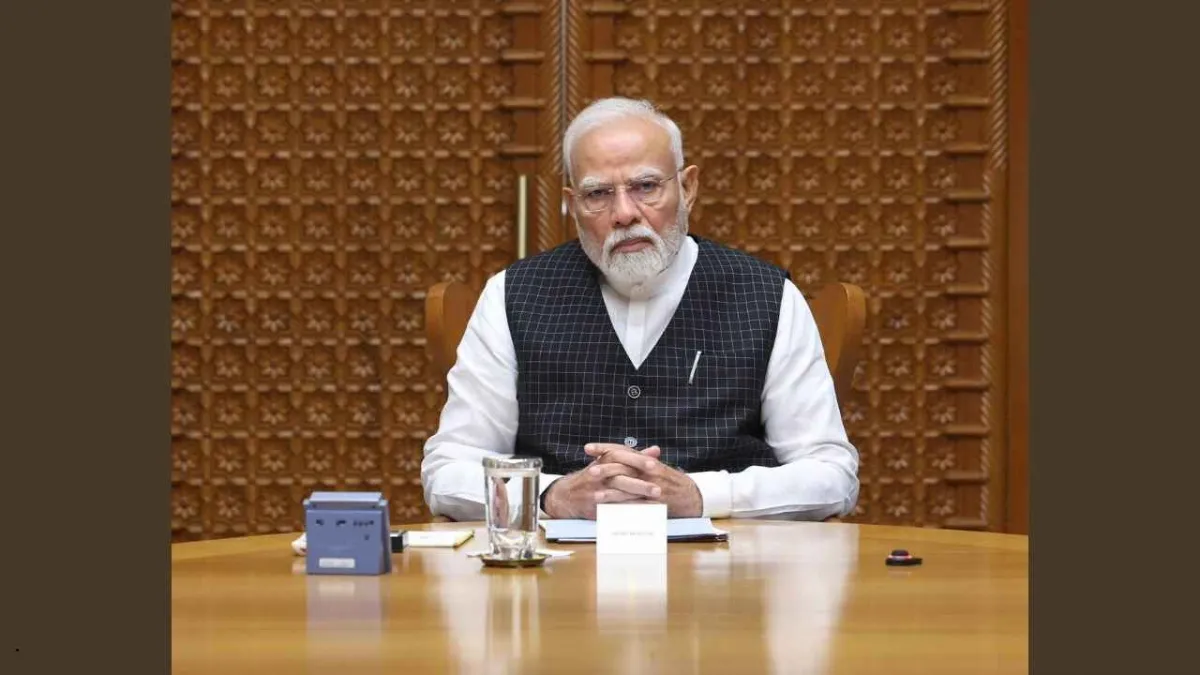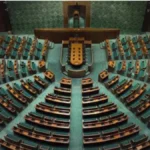Prime Minister Narendra Modi said on Saturday that India has made remarkable progress in the space sector in a very short time, and setting new records has now become the nature of Indian scientists.
In a video message on National Space Day, he shared information about several future plans related to the space program, including a pool of astronauts.
He said that at one time, the future of the space sector was bound by many restrictions. We have worked to break these chains. Prime Minister Narendra Modi congratulated the country’s youth, scientists, and startups working in the space sector on National Space Day on Saturday.
He described this year’s Space Day theme, “From Aryabhata to Gaganyaan,” as a symbol of confidence and future resolve. He said that this day has now become a center of enthusiasm and attraction among the youth and is a moment of pride for India.
He mentioned that two years ago, India became the first country to reach the Moon’s South Pole. Also, Shubhanshu Shukla filled every Indian with pride by hoisting the tricolor on the International Space Station. The Prime Minister described it as an unforgettable moment.
The Prime Minister said that India is today working on transformative technologies in the space sector. These include advancements such as semi-cryogenic engines and electric propulsion. He expressed confidence that in the near future, India’s Gaganyaan mission will take flight and the country will also establish its own space station.
In his address, the Prime Minister also mentioned the International Olympiad on Astronomy and Astrophysics, in which 300 youth from more than 60 countries participated. He said that this event is a symbol of India’s growing strength in the space sector.
Discussing private sector participation, he said that the first private communication satellite will be launched soon. Additionally, preparations for an Earth Observation Satellite Constellation are also underway.
Aryabhata
Aryabhata is the name of India’s first satellite, launched in 1975 to conduct experiments in X-ray astronomy and solar physics. It was named in honor of the 5th-century Indian mathematician and astronomer Aryabhata, who made pioneering contributions to algebra, trigonometry, and the concept of zero. The satellite represents a significant milestone in India’s space program and its scientific heritage.
Gaganyaan
Gaganyaan is India’s first crewed orbital spacecraft mission, developed by the Indian Space Research Organisation (ISRO). The program, announced in 2018, aims to send a three-member crew to low Earth orbit, marking a significant milestone in India’s space exploration history. It builds upon the success of previous unmanned missions and represents a major step towards India’s goal of establishing a sustained human spaceflight capability.
Moon’s South Pole
The Moon’s South Pole is a region of significant scientific interest due to its permanently shadowed craters, which are believed to contain water ice. These areas, untouched by sunlight for billions of years, offer a preserved record of the solar system’s history. It has become a primary target for modern lunar exploration missions aiming to utilize these resources for a sustained human presence.
International Space Station
The International Space Station (ISS) is a habitable artificial satellite and a multinational collaborative project, primarily between the space agencies of the United States (NASA), Russia (Roscosmos), Europe (ESA), Japan (JAXA), and Canada (CSA). Its construction began in 1998 with the launch of the Russian Zarya module, and it has been continuously occupied by rotating crews since November 2000. It serves as a microgravity and space environment research laboratory where scientific research is conducted in astrobiology, astronomy, meteorology, and physics.
National Space Day
National Space Day is an annual observance in the United States, not a physical place, dedicated to promoting science, technology, engineering, and math (STEM) education and celebrating the achievements and benefits of space exploration. It was created in 1997 by the Lockheed Martin Corporation and is now celebrated on the first Friday of May. The day honors past accomplishments, inspires future generations of scientists and explorers, and highlights the ongoing work in aerospace.
International Olympiad on Astronomy and Astrophysics
The International Olympiad on Astronomy and Astrophysics (IOAA) is an annual competition for high school students, first held in Thailand in 2007. It was established to promote astronomy and astrophysics education and to foster international friendships among young enthusiasts. The event features theoretical and observational exams, as well as team-based tasks, and is hosted by a different country each year.
Earth Observation Satellite Constellation
The Earth Observation Satellite Constellation is a modern technological system composed of multiple satellites working in unison to monitor the planet. It was developed primarily in the 21st century to provide comprehensive, real-time data on weather, climate, agriculture, and natural disasters. This network represents a significant advancement in our ability to study and understand global environmental changes.
private communication satellite
A private communication satellite is an artificial satellite owned and operated by a commercial entity rather than a government. These satellites were pioneered in the 1960s, with COMSAT’s Early Bird (Intelsat I) being one of the first to provide commercial transatlantic communications. Today, private companies operate vast constellations that provide global services like television broadcasting, internet access, and secure data links.






